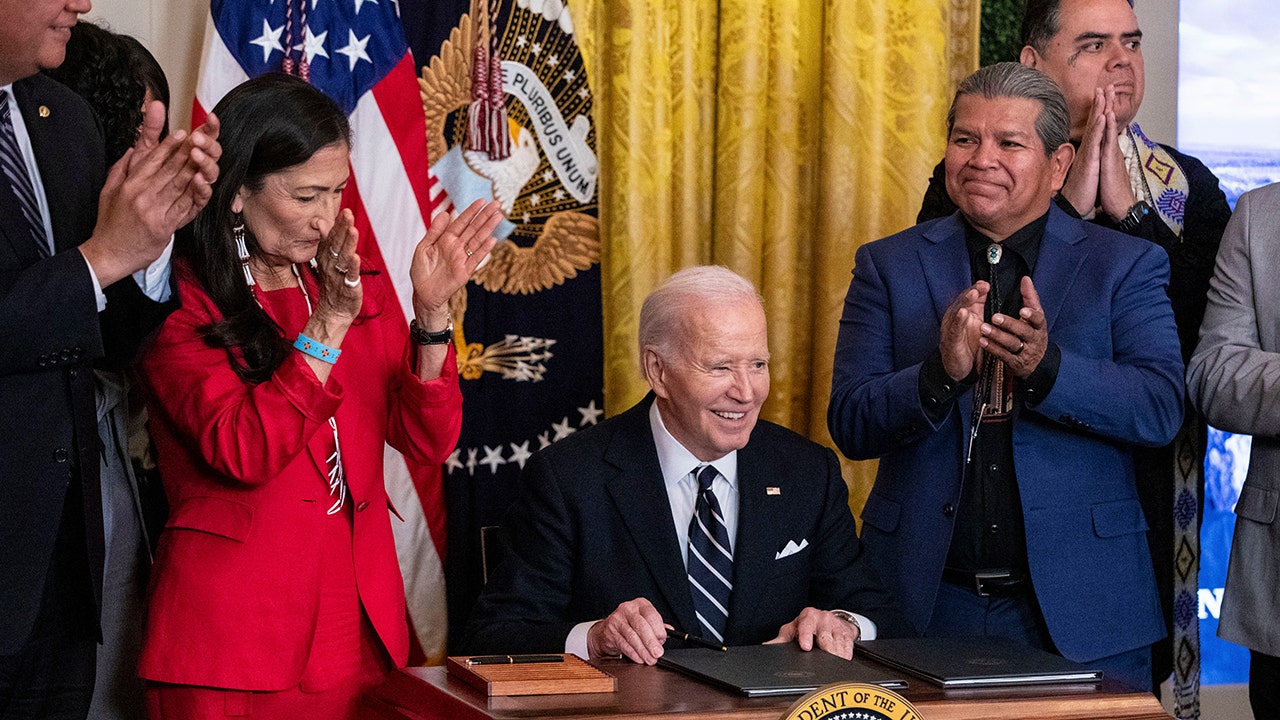Sports
Dodgers' growing offensive struggles have a familiar feel in loss to Cubs
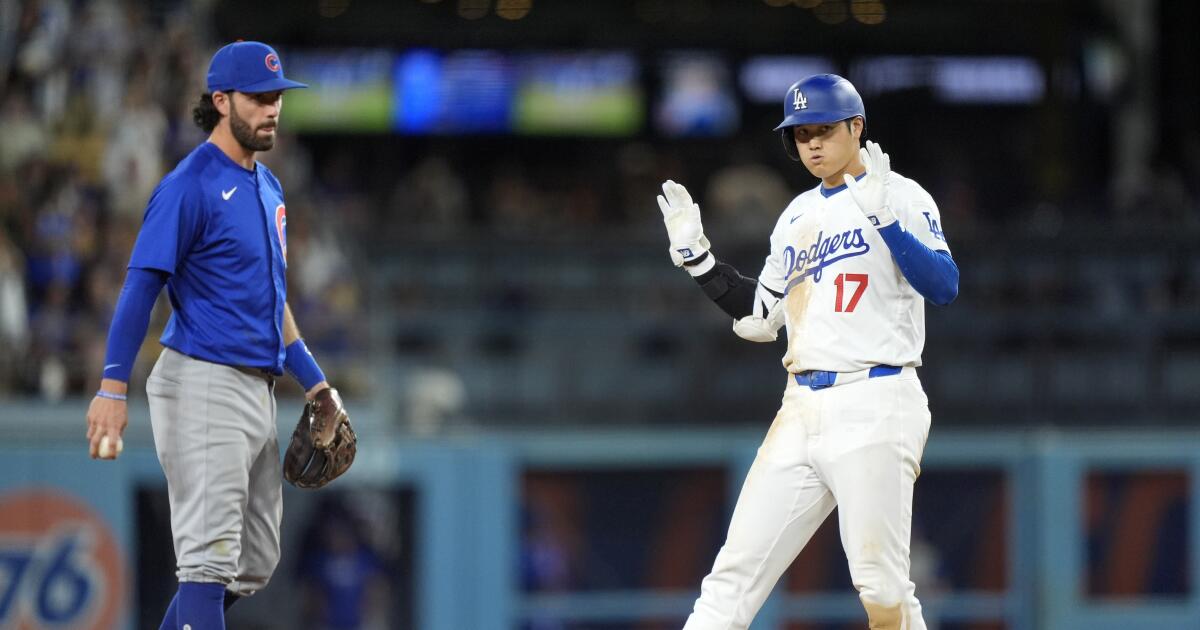
It was around this time last year that the Dodgers offense started cooling off.
After a sluggish performance at the plate this week, they can only hope it isn’t happening again.
Before the Dodgers crashed out of the 2023 playoffs in a National League Division Series sweep against the Arizona Diamondbacks, the team’s bats began to quiet in September, when declining production from big stars and role players alike foreshadowed the offensive no-show that doomed the team in October.
Lately, the Dodgers have experienced something similar, following up a rollicking showcase in Arizona with a muted week offensively since.
The latest example came in a 10-4 loss to the Chicago Cubs on Monday night at Dodger Stadium, in which ex-Dodgers Cody Bellinger and Michael Busch almost outscored the entirety of their former team.
In the first four innings alone, Bellinger and Busch had three hits, a home run apiece and four total RBIs off Walker Buehler.
The Dodgers, meanwhile, didn’t score their first run until the fifth and squandered multiple opportunities to get back in the game — despite facing Cubs starter Kyle Hendricks and his 6.60 ERA, worst among MLB starters with 100 innings.
“We had the opportunities,” first baseman Freddie Freeman said. “I think we could go through the course of the year and, unfortunately, this is what happens in baseball when you play 162 games. You can have the opportunities, you just don’t get the hits.”
Since tallying 32 runs and 52 hits in a victorious four-game series against the Diamondbacks to start the month, the Dodgers have managed just 23 runs and 45 hits in six games since.
During that stretch, they’ve struck out 56 times. They’ve scored five or more runs just twice. And, after appearing to turn a corner at the plate with a healthy lineup for the first time in months, signs of their mid-summer malaise have returned.
“I think offensively certainly the first few innings were forgettable,” manager Dave Roberts said. “I thought [after] calibrating … we took better at-bats and we took the walks when we needed, got [Hendricks] out of the game, stressed their pen. We just couldn’t get that hit to really put up multiple crooked numbers.”
Alarm bells aren’t ringing yet. But reasons for concern are starting to sprout.
The Dodgers’ biggest problems Monday resided at the bottom of the batting order.
While Shohei Ohtani, Mookie Betts and Freeman combined for five hits and five walks — Ohtani also stole his 47th base of the season in his continued pursuit of MLB’s first 50 homer-50 steal season — the rest of the lineup offered little support.
Max Muncy went hitless and managed only one RBI (a fifth-inning sacrifice fly) from two bases-loaded at-bats, leaving him two for 18 since the start of September.
Will Smith failed to build off a three-hit performance Sunday, continuing his second-half slide with an 0-for-five line that included a strikeout with two runners aboard in the fifth.
Tommy Edman had two hits, while Gavin Lux, Chris Taylor and Miguel Rojas each singled. But as a team, the Dodgers (86-58) were just two for seven with runners in scoring position and left 10 runners on base — not nearly enough on a night they trailed 3-0 after the first inning and 7-2 at the end of the sixth.
“I think the production from the bottom half, I certainly know it’s not as dire as it was early in the season,” Roberts said, maintaining confidence in an offense that still ranks third in the majors in scoring this season. “I still think we’re in a good spot.”
But on Monday, at least, the Cubs (74-70) were simply better.
Bellinger, the Dodgers’ former rookie of the year and most valuable player award winner, opened the scoring with a first-pitch, two-run homer in the first, launching his second long ball as a visiting player at Chavez Ravine deep into the right-field pavilion.
Cody Bellinger rounds third after hitting a two-run home run for the Chicago Cubs during the first inning Monday.
(Mark J. Terrill / Associated Press)
Busch, the former Dodgers prospect who was traded to Chicago last offseason, tallied the next two runs for the Cubs. He lined an RBI single in the first, then cleared the short wall in left on an opposite-field solo homer in the fourth.
It all amounted to a “pretty big step back” for Buehler, as he put it, after a pair of encouraging outings in his previous two starts. The right-hander finished the night with five earned runs in five-plus innings, and struck out just four batters while allowing nine hits.
“I screwed us from the jump,” said Buehler, who now has a 5.95 ERA on the season and 9.69 ERA in first innings. “Obviously three runs in the first kind of sucked the energy out of the building … That’s a lot to ask of the rest of our guys to dig me out of a hole every game.”
Despite that, the Dodgers had chances to rally.
They loaded the bases in the third inning, but came away with nothing.
They scored twice in the fifth and seventh innings — Betts homered in the latter, his seventh in 26 games since returning from a broken hand — but missed opportunities in each to chip away further.
“Chalk it up to one of those days,” Freeman said. “Come back and get them tomorrow.”
The good news for the Dodgers: Their biggest stars are still hitting.
In addition to his seven homers, Betts also has a .316 batting average and 26 RBIs since coming off the injured list.
Freeman, who is still playing through a fractured right middle finger, is 11 for 33 with seven walks since getting a three-game break in late August.
Ohtani is also continuing to mash, batting an even .300 since Aug. 21 in search of his third MVP award.
But if the Dodgers thought their top-heavy lineup problems were a thing of the past, Monday’s loss — in which they were without Teoscar Hernández for a third straight game because of his foot contusion — offered a familiar reminder of how quickly things can turn.
“Every single day we come in with a game plan to win that game and do our best,” Freeman said. “Just didn’t happen today.”

Sports
With Mike Vrabel and Drake Maye, Patriots have one of NFL’s better coach-QB pairings

FOXBORO, Mass. — Mike Vrabel has a plan for Drake Maye. For the young quarterback, who’s coming off a promising rookie season, it’s less about specific footwork and not really — at least yet — about reads, processing or mechanics.
Vrabel, officially now the head coach of the New England Patriots, has been around enough quarterbacks to know what success at that position should look and sound like. And that’s where he thinks he can most help the 22-year-old Maye.
“Drake is going to be his own person, but I’m going to give him some things that I feel like are necessary to help us win football games,” Vrabel said during his introductory news conference Monday.
Left unsaid during the pomp of Vrabel’s big day is what his presence next to Maye solidifies. Even if the Patriots have plenty of other issues that require fixing, they believe they have their coach and quarterback for years to come, the most important pairing in professional sports. They haven’t had that since at least Mac Jones’ rookie season (with Bill Belichick) in 2021, perhaps since Tom Brady had a locker at Gillette Stadium.
In a league that’s all about the head coach and quarterback, it’s OK that the Patriots’ to-do list is long and difficult. Nothing really matters until you have the right coach and quarterback. Now the Patriots feel they have both.
GO DEEPER
Mike Vrabel isn’t selling any Patriots glory. He’s playing defense against it
There’s a long way to go for both Vrabel and Maye to make this work the way the Patriots envision, but it’s also fair to note there are probably not too many other coach-quarterback pairs you’d no doubt take over Vrabel and Maye for the next five years. That’s not to anoint them the second coming of Belichick and Brady. But it’s the one reason that amid so many other issues, there’s a lot of optimism right now in New England.
“Put great people around him,” Vrabel said of his plan for Maye. “I would say that my involvement will be as it relates to game management and situational awareness and where we are on the football field and trying to develop him as a leader of the offense. When a quarterback calls the play, you want to say it like everybody’s going to believe that it’s going to score a touchdown — like with that type of emphasis on how everything is going to operate.”
Mike Vrabel on developing @DrakeMaye2 and the Patriots offense. pic.twitter.com/k3gisgBG97
— New England Patriots (@Patriots) January 13, 2025
It sounds wild given how bad the Patriots have been the last few years and the state of the roster, but there probably aren’t many pairings more promising over the next five years than Vrabel and Maye. The Chiefs, Bengals, Bills, Ravens, Chargers and 49ers have solid arguments for a better pairing. But the Patriots could be in the next tier with the Texans, Eagles and Lions.
Perhaps one of the slights on the duo could be that Vrabel’s passing offenses with the Titans never put up gaudy numbers. During their 11-win season in 2020, they ranked 23rd in passing yards. When they won 12 games the next year, they ranked 25th. But that would ignore their efficiency. In those two years, they ranked third and sixth in passing success rate.
For his part, Vrabel tried to put to rest the concerns that he’s always had run-first offenses, which doesn’t seem ideal for a promising young quarterback.
“We have to be a very efficient passing football team,” Vrabel said. “When you look at statistically what wins in the National Football League, our ability to affect the other team’s quarterback and our ability to provide for an efficient quarterback and passing game is a high contributor to success.”
Of course, Maye’s development is going to be largely pinned on whomever Vrabel picks as his offensive coordinator.
Vrabel said that decision isn’t close to being made yet and that the Patriots will do a full search to fill out their coaching staff.

GO DEEPER
New Patriots coach Mike Vrabel will have his pick of offensive and defensive coordinators
“That’s far from solidified,” he said. “We want to put the best, (most) talented coaches in front of our players. … I want the players to embrace what every coach is teaching. I will tell you this, as long as I’m the head coach here, our coaches will have three simple jobs — and they sound simple, but they’re probably not as simple as we want to make them be. They want to teach, they want to develop and they want to inspire our players by making a connection.”
On this day, a celebratory one in front of a slew of microphones and cameras, Vrabel seemed to have all the right details and answers down to the three tasks for his assistant coaches.
On Day 1, he brought stability and respectability to a franchise badly in need of it. And in the process, he’s paired now with Maye to give the Patriots assurances at the two most important spots in building an NFL team.
(Photos: Eric Canha and Mark J. Rebilas / Imagn Images)
Sports
Chiefs' Travis Kelce responds to NFL postseason-related question with Taylor Swift lyric
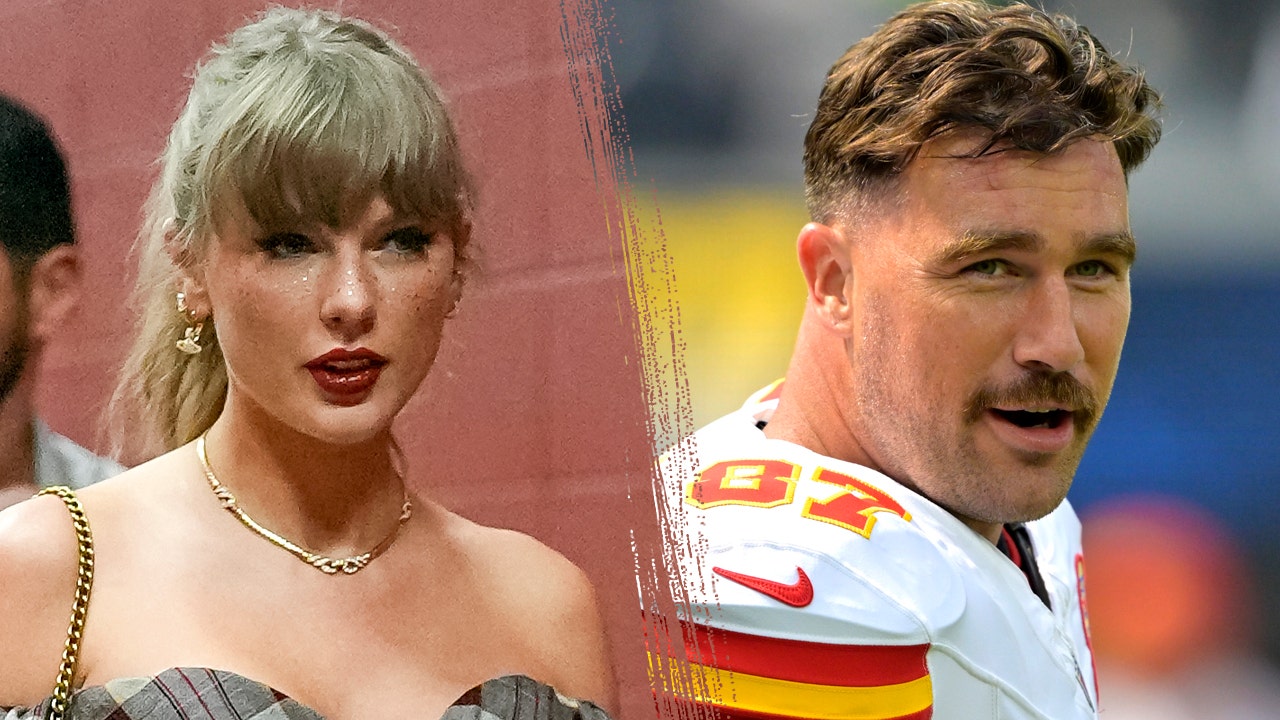
The Kansas City Chiefs’ quest for an unprecedented third consecutive Vince Lombardi Trophy begins in earnest on Saturday when they welcome the Houston Texans to Arrowhead Stadium for a playoff game.
The Texans upset the Los Angeles Chargers in the wild-card round over the weekend, which punched their ticket to the divisional round. Travis Kelce, 35, has been in the NFL for more than a decade, but the Chiefs star tight end told ESPN’s Pat McAfee he still feels like he has the energy of a young athlete.
Kelce actually mentioned a specific number — 22 — when he was asked about how he felt as the Chiefs head into the playoffs. “22” is also the title of one of pop star Taylor Swift’s songs from her album “Red.”
Taylor Swift and Travis Kelce in a split photo. (IMAGN)
“I don’t know about you, but I’m feeling 22,” he said in a nod to one of the song’s lyrics this week during an appearance on “The Pat McAfee Show” this week.
Kelce and Swift have been romantically linked for more than a year, with the singer making routine appearances at Chiefs games since the 2023 season.
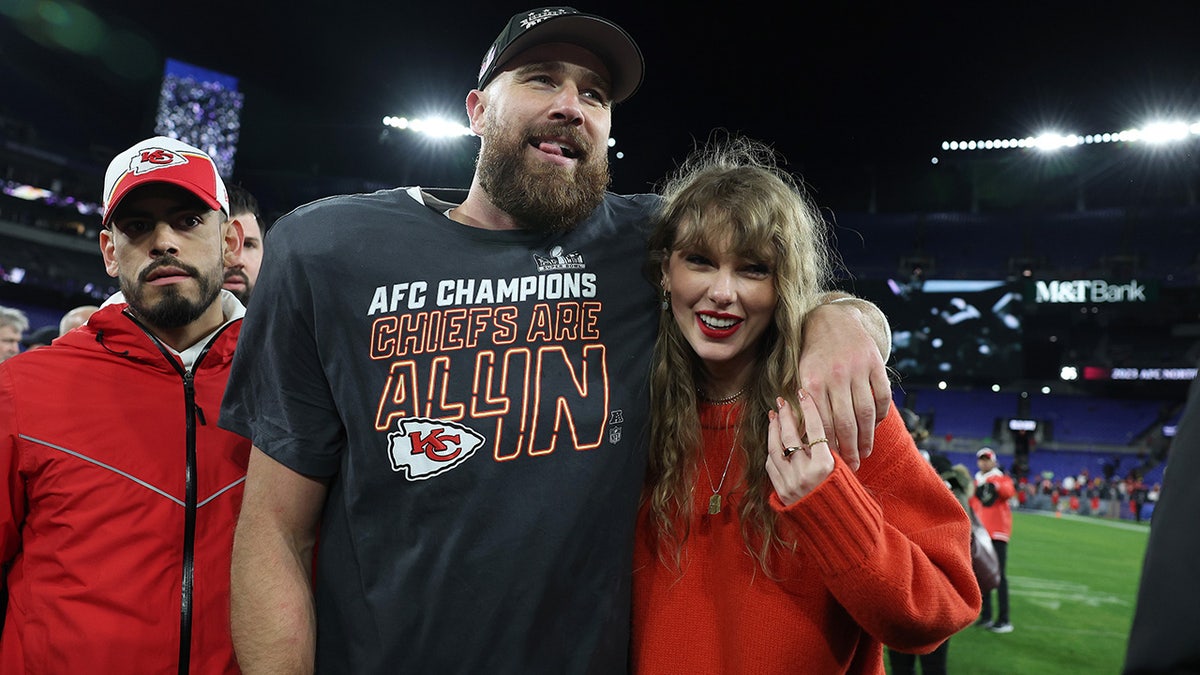
Taylor looked lucky in love as she supported Travis Kelce following his big win at the AFC Championship game. (Patrick Smith)
Kelce was recently named to his 10th consecutive Pro Bowl. But, he likely hopes to skip the event and in favor of competing in the Super Bowl in New Orleans.
TRAVIS KELCE RECEIVES MOST FAN VOTES FOR 2025 PRO BOWL
Although Kelce fell short of the coveted 1,000 receiving yards mark this past regular season, he appeared to round into playoff form as the year progressed.
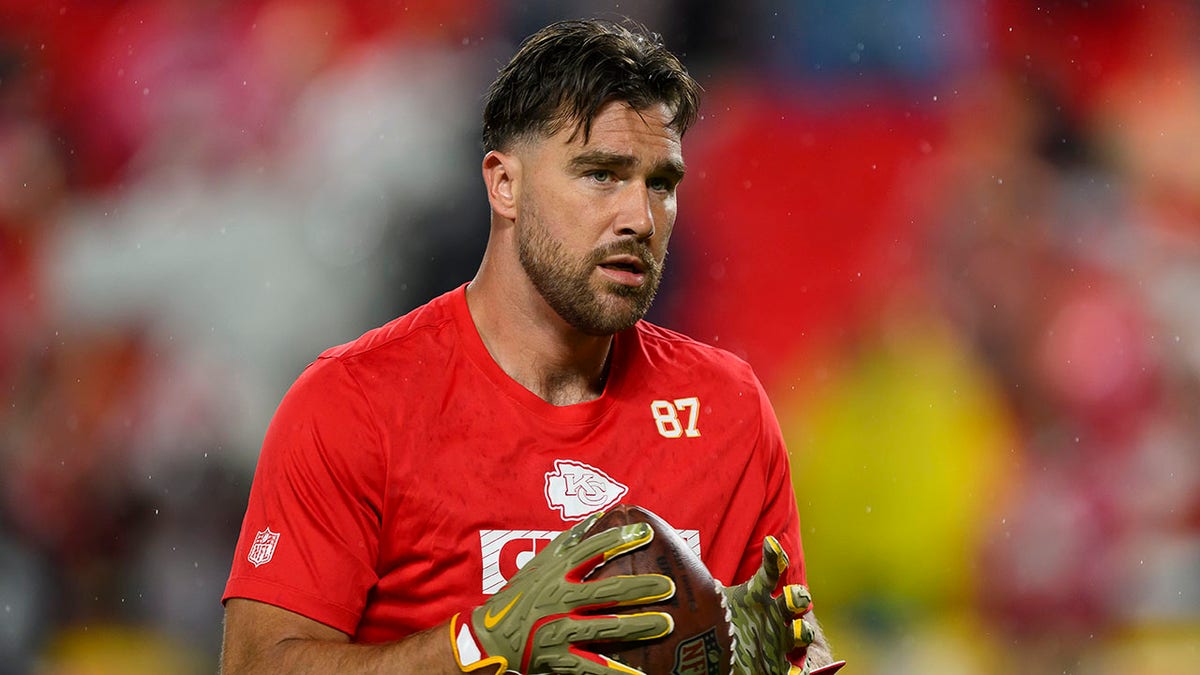
Kansas City Chiefs tight end Travis Kelce after making a catch during warmups before an NFL football game against the Tampa Bay Buccaneers, Nov. 4, 2024, in Kansas City, Mo. (AP Photo/Reed Hoffmann, File)
He finished the Chiefs’ Christmas Day victory over the Pittsburgh Steelers with 84 receiving yards and a touchdown reception.
Kelce has been a key part of three Super Bowl winning teams, including the Chiefs win over the Philadelphia Eagles in Super Bowl LVII and last year’s title run. No NFL team has ever won three consecutive Super Bowl titles.
Follow Fox News Digital’s sports coverage on X, and subscribe to the Fox News Sports Huddle newsletter.
Sports
Rams to have 'sense of urgency' in slowing Saquon Barkley, Eagles

It was an embarrassing defeat, a night when Philadelphia Eagles running back Saquon Barkley dominated the Rams.
On Nov. 24, Barkley rushed for 255 yards and scored on runs of 70 and 72 yards in a 37-20 victory over the Rams at SoFi Stadium.
The defeat marked a turning point for the Rams.
Coach Sean McVay challenged his players to give their best effort over the final 39 days of the season. The Rams reeled off five consecutive victories before McVay rested starters in a season-ending loss to the Seattle Seahawks.
“When you have humbling experiences, with the right kinds of people, those are where the real growth [opportunities] exist,” McVay said Tuesday during a video conference with reporters, adding, “A lot of the scars that we’ve had as a team have been what led us to the point where we’re at.”
The Rams, coming off a dominating NFC wild-card victory over the Minnesota Vikings, are preparing to face Barkley and the No. 2-seeded Eagles in a divisional-round game on Sunday at Lincoln Financial Field in Philadelphia.
The Eagles advanced by defeating the Green Bay Packers, 22-10, on Sunday.
“They’re real,” McVay said of Eagles, adding, “They’re in this position for a reason.”
The Eagles feature Barkley, quarterback Jalen Hurts, receivers A.J. Brown and DeVonta Smith, tight end Dallas Goedert and, perhaps most importantly, one of the NFL’s best offensive lines.
Vic Fangio coordinates a defense that gave up only one touchdown and intercepted three passes against the Packers.
But Barkley is the biggest star on a team full of them.
The seventh-year pro, in his first season with the Eagles, rushed for 2,005 yards and 13 touchdowns.
Eagles running back Saquon Barkley scores on a 70-yard touchdown against the Rams in the third quarter at SoFi Stadium in Week 12.
(Wally Skalij / Los Angeles Times)
A good chunk came against the Rams.
So how must it be different on Sunday, when the Rams face a running back who rushed for 119 yards in 25 carries against the Packers?
“Our sense of urgency will be appropriate for the task at hand,” McVay said.
The Rams displayed an overwhelming pass rush against the Vikings — they tied an NFL postseason record with nine sacks — but neutralizing Barkley will be the key against the Eagles, Rams players said.
“Stopping Saquon and being able to get to some of the positions we were in tonight,” defensive lineman Braden Fiske said after the victory over the Vikings. “Getting to be able to rush the passer. I mean that’s what we got to do, get them into third and longs and keep them out of third and shorts.”
The Eagles offense, with Barkley and other weapons, “can really do damage at any time,” safety Quentin Lake said.
“We’re going to come up with a good game plan to make sure that we can limit the explosive plays,” Lake said. “Obviously, limit Saquon Barkley because we know how dangerous he is. And somehow, some way, find our opportunities to make plays on the ball.
“And if we do those things, we’ll have a good chance of winning.”
Etc.
Rams tight end Tyler Higbee, who suffered a chest injury against the Vikings, was released from the hospital and returned to Los Angeles on Monday night with the team. McVay said Higbee was taken to the hospital after spitting up blood. McVay had no other update but Higbee “has full expectation that he’ll be ready to go” on Sunday, McVay said. McVay had no update on cornerback Ahkello Witherspoon (hamstring). … Having left fire-ravaged Los Angeles for Arizona to prepare for their wild-card game, McVay said the Rams planned to remain in Southern California before leaving for Philadelphia on Saturday. “I’m very hopeful that we’ll be able to be here this week,” he said, adding, “All of our expectations for the time being are that we’re going to be able to have our preparation here.”
-

 Health1 week ago
Health1 week agoOzempic ‘microdosing’ is the new weight-loss trend: Should you try it?
-
/cdn.vox-cdn.com/uploads/chorus_asset/file/25822586/STK169_ZUCKERBERG_MAGA_STKS491_CVIRGINIA_A.jpg)
/cdn.vox-cdn.com/uploads/chorus_asset/file/25822586/STK169_ZUCKERBERG_MAGA_STKS491_CVIRGINIA_A.jpg) Technology6 days ago
Technology6 days agoMeta is highlighting a splintering global approach to online speech
-

 Science3 days ago
Science3 days agoMetro will offer free rides in L.A. through Sunday due to fires
-
/cdn.vox-cdn.com/uploads/chorus_asset/file/25821992/videoframe_720397.png)
/cdn.vox-cdn.com/uploads/chorus_asset/file/25821992/videoframe_720397.png) Technology7 days ago
Technology7 days agoLas Vegas police release ChatGPT logs from the suspect in the Cybertruck explosion
-

 Movie Reviews1 week ago
Movie Reviews1 week ago‘How to Make Millions Before Grandma Dies’ Review: Thai Oscar Entry Is a Disarmingly Sentimental Tear-Jerker
-

 Health1 week ago
Health1 week agoMichael J. Fox honored with Presidential Medal of Freedom for Parkinson’s research efforts
-

 Movie Reviews1 week ago
Movie Reviews1 week agoMovie Review: Millennials try to buy-in or opt-out of the “American Meltdown”
-

 News7 days ago
News7 days agoPhotos: Pacific Palisades Wildfire Engulfs Homes in an L.A. Neighborhood











